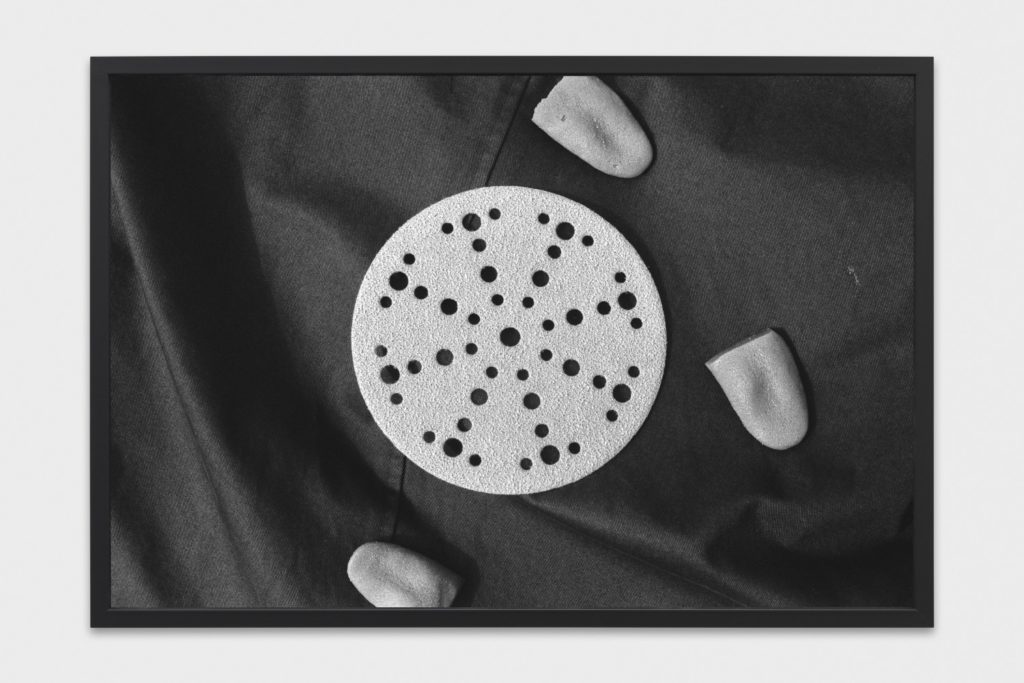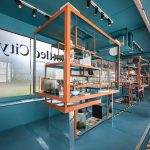Los Mutantes
2012 - Installation (Installation)
170 frames, each 9.53H x 3.07W x 1.18D inches
Pedro Reyes
Pedro Reyes’s Los Mutantes ( Mutants , 2012) is composed of 170 plates that combine characters from ancient and modern mythologies. As in a periodic table, animals and objects are combined with humans (male or female), providing a rational framework for the irrational products of human imagination. A Cartesian matrix such as this must follow certain rules. All figures are half-human, half-something. Animal/cartoon characters that speak, such as Fritz the Cat or Donald Duck, are excluded, as well as oddities and chimeras without recognizable human features. Their arrangement results in combinations such as fish plus woman equals mermaid; bull plus man equals minotaur, and so on. The juxtapositions cross figures from pop culture with those from ancient myths, encouraging us to notice similarities between religious icons and comic-book characters. All of these “mutants” reveal something about our desire to extract qualities of animals or objects and empower ourselves with them. Mythologies are a reflection of the paradigms of their time, and this kind of periodic table presents a rational framework to categorize irrational products of the imagination.
Pedro Reyes’s works traverse the worlds of art, film, architecture, design, social criticism, and pedagogy. Educated as an architect, Reyes draws on this training to engage with utopian aspirations and the ongoing legacy of Modernism, often focusing on issues of scale and space while questioning pressing social issues through the incitement of individual or collective interaction. Although only a few of his works are directly located within the practice of building, almost all involve some kind of construction, whether they are objects, models, interiors, or social spaces. Reyes also makes use of strategies developed for communication or education, as well as everyday humor, to engage his audiences. Many of his works either allow large-scale public engagement or suggest a possible use: weapons turned to shovels, multilevel parks in old modernist buildings, and small spherical rooms. Like many avant-garde thinkers of the past, Reyes constructs new forms of architecture necessary for new ways of life.
Colors:
Related works sharing similar palette

© » KADIST
Christian Jankowski
2008In New York City’s Chinatown, subject Suat Ling Chua’s morning exercise is to practice the hula hoop...

© » KADIST
Amalia Pica
2013Memorial for intersections #2 (2013) is a minimalist, black metallic structure that contains the brightly colored translucent circles, triangles, rectangles, and squares that originally were presented in Pica’s performance work A ? B ? C (2013)...

© » KADIST
Andrew Grassie
2009In 2008, Grassie was invited by the Whitechapel Gallery to document the transformation of some of its spaces...

© » KADIST
Gregory Crewdson
2005Forest Gathering N.2 is part of the series of photographs Beneath the Roses (2003-2005) where anonymous townscapes, forest clearings and broad, desolate streets are revealed as sites of mystery and wonder; similarly, ostensibly banal interiors become the staging grounds for strange human scenarios...

© » KADIST
Abigail Reyes
2016The video work Si Señor by Abigail Reyes is about the typical representation of women in Latin American office culture...

© » ASX
Maude Arsenault – Resurfacing – AMERICAN SUBURB X Skip to content Her work invests the themes of female representation, private space, domesticity and intimacy within the framework of a photographic and material approach which oscillates between abstract compositions, self-portraits, landscapes and images documentaries...

© » SLASH PARIS
A line is not a border — Group show — Galerie Xippas — Exposition — Slash Paris Connexion Newsletter Twitter Facebook A line is not a border — Group show — Galerie Xippas — Exposition — Slash Paris Français English Accueil Événements Artistes Lieux Magazine Vidéos Retour A line is not a border — Group show Exposition Installations, peinture, photographie, sculpture.....

© » KADIST
Douglas Gordon
2002Blind Spencer is part of the series “Blind Stars” including hundreds of works in which the artist cut out the eyes of Hollywood stars, in a symbolically violent manner...

© » KADIST
Wong Wai Yin
2021Drawn from the widely circulated images of protests around the world in support of women rights and racial equality, the phrase I can’t believe we are still protesting is both the title of Wong Wai Yin’s photographic series and a reference to similar messages seen on protest signages...











